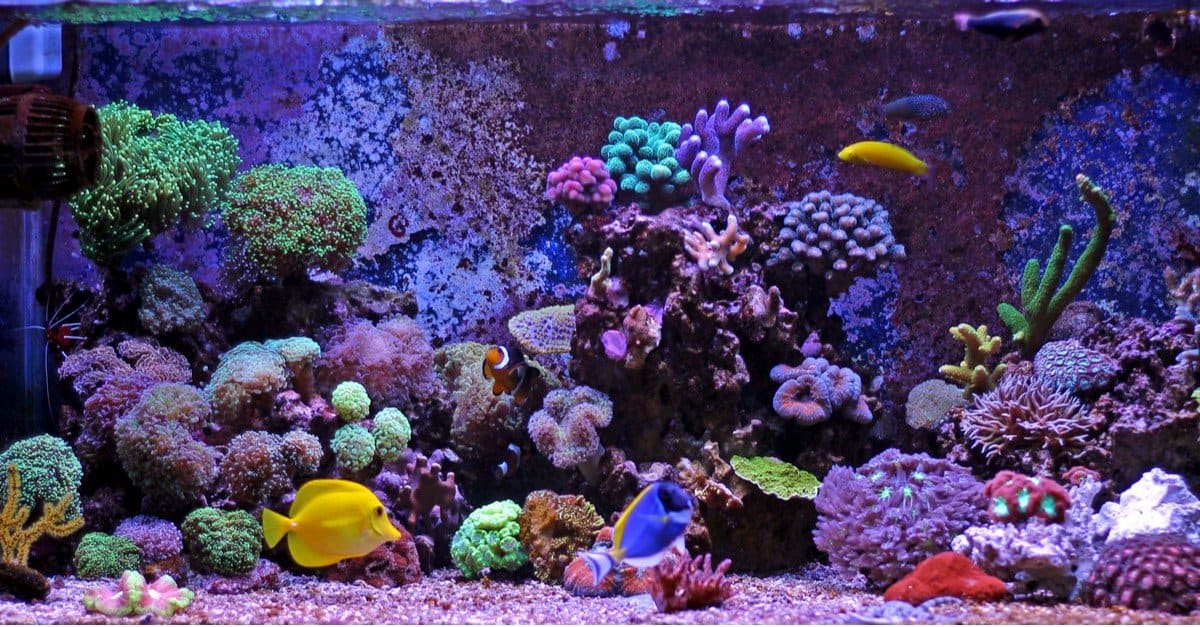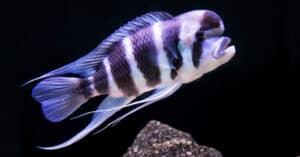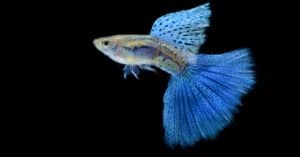Saltwater aquariums are often not recommended due to the fact that the fish and tank require extra care. As aquatic lovers, we’re here to say that saltwater fish might be more work but can be worth it in the end. So, if you want to learn about the 10 types of saltwater fish and what makes the best pets, we’ve got you covered!

We’ve all visited the doctor’s and dentist’s offices, where they keep a saltwater aquarium. The fish are brimming with fluorescent colors and are often very unique in appearance. If you’ve sought to expand into the worth of saltwater tanks, you will need to know what fish species work best.
Below, we’ve crafted a list of the best saltwater fish for pets, how you can care for them, and their difficulty level for raising. Just keep in mind there are only some of the saltwater fish you can find as pets. You can always check out Petco’s saltwater fish aisle for more options.
10 Types of Saltwater Fish That Make the Best Pets
When it comes to types of saltwater fish, it’s difficult to only choose a few that make good pets. Ideally, you want to construct a lively tank that is free from the fish attacking one another. Below, we’ve ranked saltwater fish by their difficulty in raising and aggression.
1. Clownfish
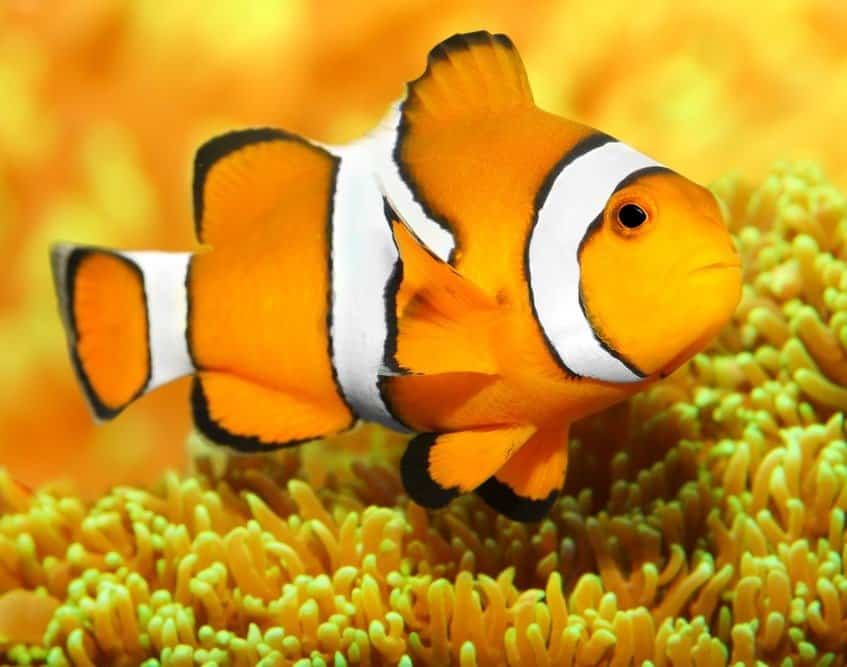
A clownfish on top of its anemone home.
©Kletr/Shutterstock.com
We’ve all seen the movie Finding Nemo and have come to love the false percula clownfish. Out of all the saltwater fish, clownfish are generally the best beginner-friendly fish. Not only do they look adorable, but they also do well in any size of the tank.
The clownfish is an excellent addition to any saltwater tank because it claims a small territory for itself. While other saltwater species might roam around, the clownfish will rarely move from its territory, making it less likely there will be territorial issues with other fish.
You can also easily get clownfish at most fish stores. Captive clownfish have better temperaments and also are much more adapted to being hand-fed. That being said, clownfish do not do well alone, so they aren’t a “lone tank” type of species.
2. Dottyback
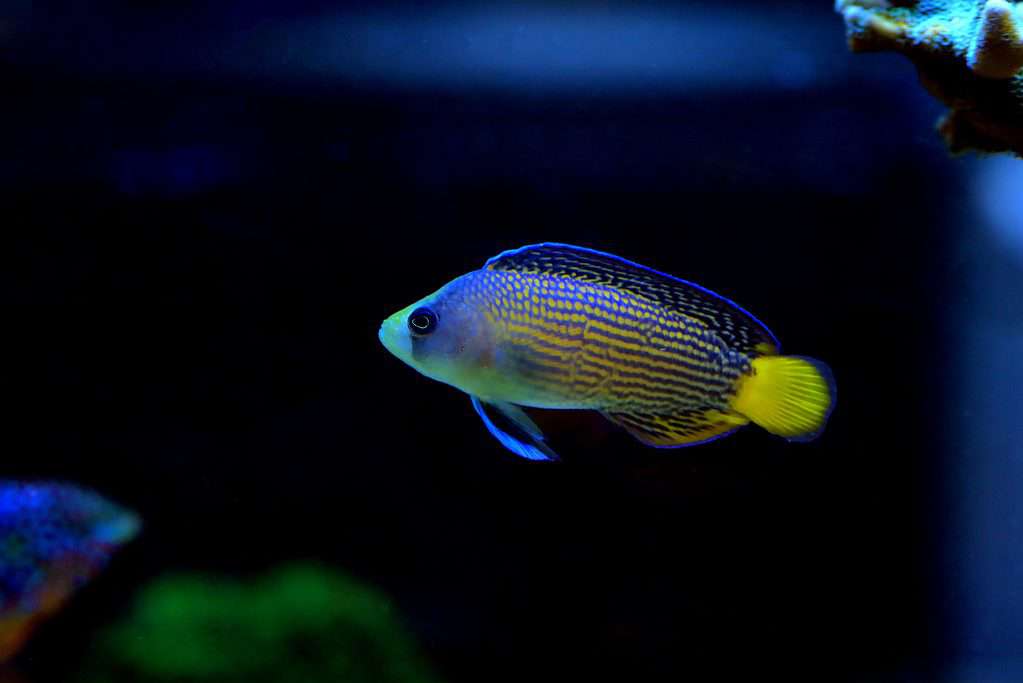
A Dottyback fish enjoying its time in an aquarium.
©Vojce/Shutterstock.com
If you’re looking for an exotic-looking fish, then you’ll likely enjoy the dottyback. It’s a small saltwater fish that are perfect for beginners. They take little effort to take care of and are often independent fish.
The Dottyback enjoys roaming, which means they require a 30-gallon tank or more. They also don’t do well with other fish and will need multiple hiding spots as they tend to be territorial. Otherwise, they do end up attacking other fish in the aquarium.
3. Firefish
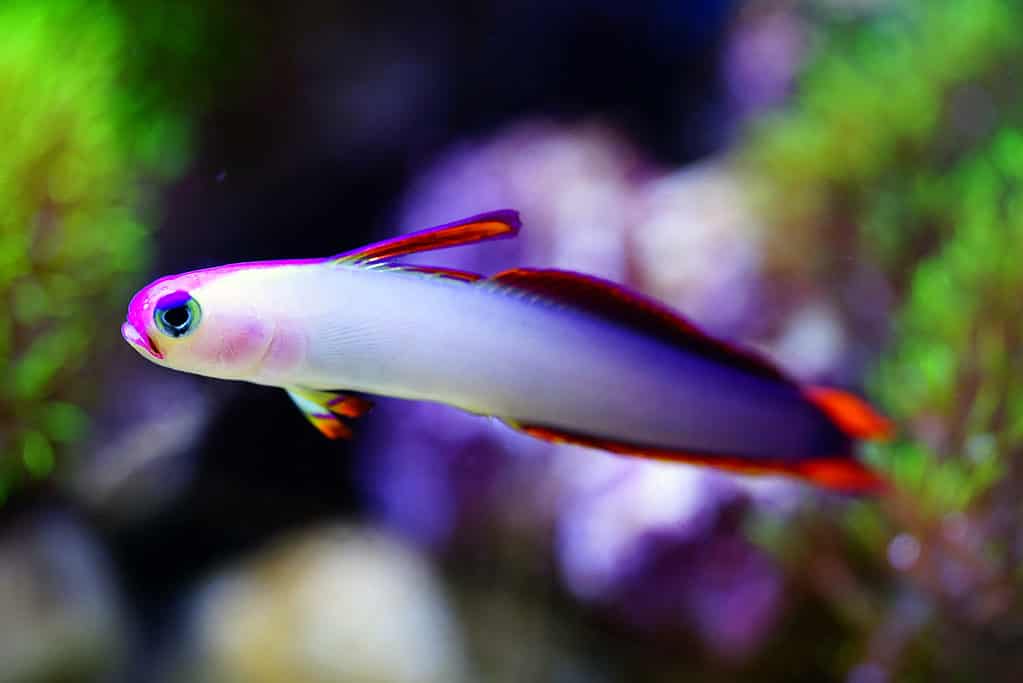
A firefish with bright red scaling.
©Chris Cheung/Shutterstock.com
Fireish is an excellent addition to any tank if you want it to look more colorful. The firefish has a white and red gradient appearance, but there are also orange and magenta variations.
Unlike other saltwater fish, firefish are very friendly. They won’t attack other fish and aren’t territorial. Even if put in a tank with an aggressive fish, this species often survives due to its ability to outswim. Firefish swim extremely fast and can get away from other fish training to chase them.
4. Blue-Green Damselfish

A damselfish with blue and green tinted scales.
©Podolnaya Elena/Shutterstock.com
Another beginner-friendly fish is the blue-green damselfish. This beautiful iridescent fish comes in various colors, sometimes resembling a disco ball’s reflectiveness. Despite its appearance, the fish is actually one of the more friendly and loves to travel in groups of three to five.
Due to this, it might not be the best idea to put it in a tank with aggressive fish. It will have no other fish to swim around with and will get lonely. If you want it to thrive, placing it with other Damselfish is best, but it will also get along with other fish as long as they aren’t territorial or aggressive breeds.
Watching the Blue Green Damselfish swim around all day indicates that it’s getting along well with its surroundings. The activity in the aquarium will also be pleasant, which is good for those looking for active tanks.
5. Blue Tang

A blue tang, which is similar to
Finding Nemo‘s Dory.
©Charlotte Bleijenberg/Shutterstock.com
Another favorite from the kid’s movie Finding Nemo is the blue tang, which was Dory’s character. The blue tang is a bit more difficult than other fish breeds, which are somewhat aggressive in certain circumstances. While they may not be overly aggressive, they do display aggression when they don’t have enough shelter.
However, the blue tang is prone to a lot of health issues. That’s why the breed isn’t recommended for those wanting an “easy” time with raising saltwater fish. They can contract fish disease and ich. Aside from that, they are also prone to forming head and lateral line erosion.
6. Diamond Watchman Goby
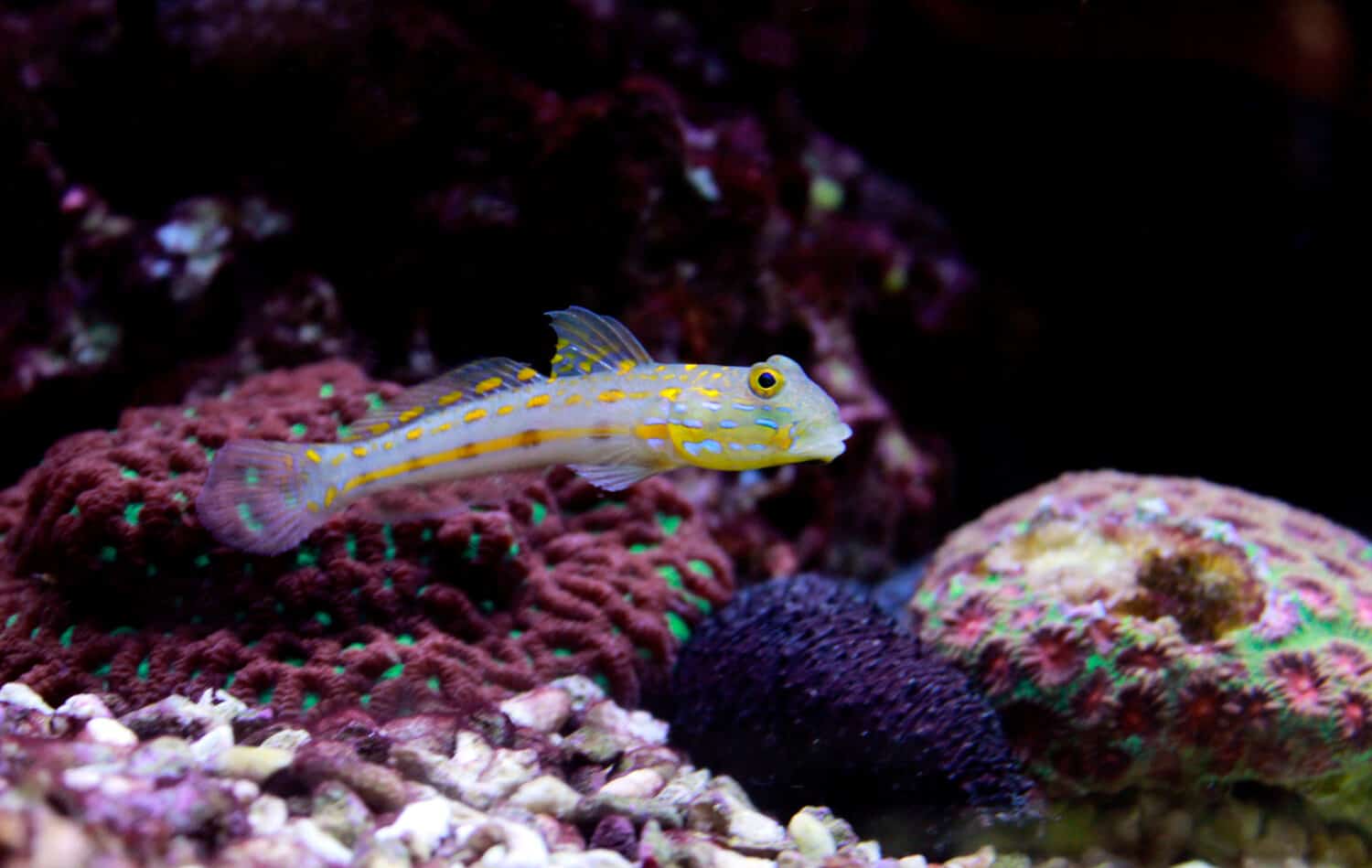
With the ability to filter through sand to strain out food and impurities, Diamond Watchman gobies are fascinating fish.
©Vojce/Shutterstock.com
The Diamond Watchman goby is a great saltwater fish for tanks. Like other goby species, the Diamond Watchman is known for having a unique ability to filter through sand and strain out food and impurities. This includes microfuges, copepods, and other small organisms.
They often work well in a saltwater tank and are friendly overall. However, they don’t play well with other Diamond Watchmen or similar sand sifters. Once a Diamond Watchman has claimed a territory, it protects it. So, experts only recommend housing one or two in a saltwater tank.
7. Flame Hawkfish
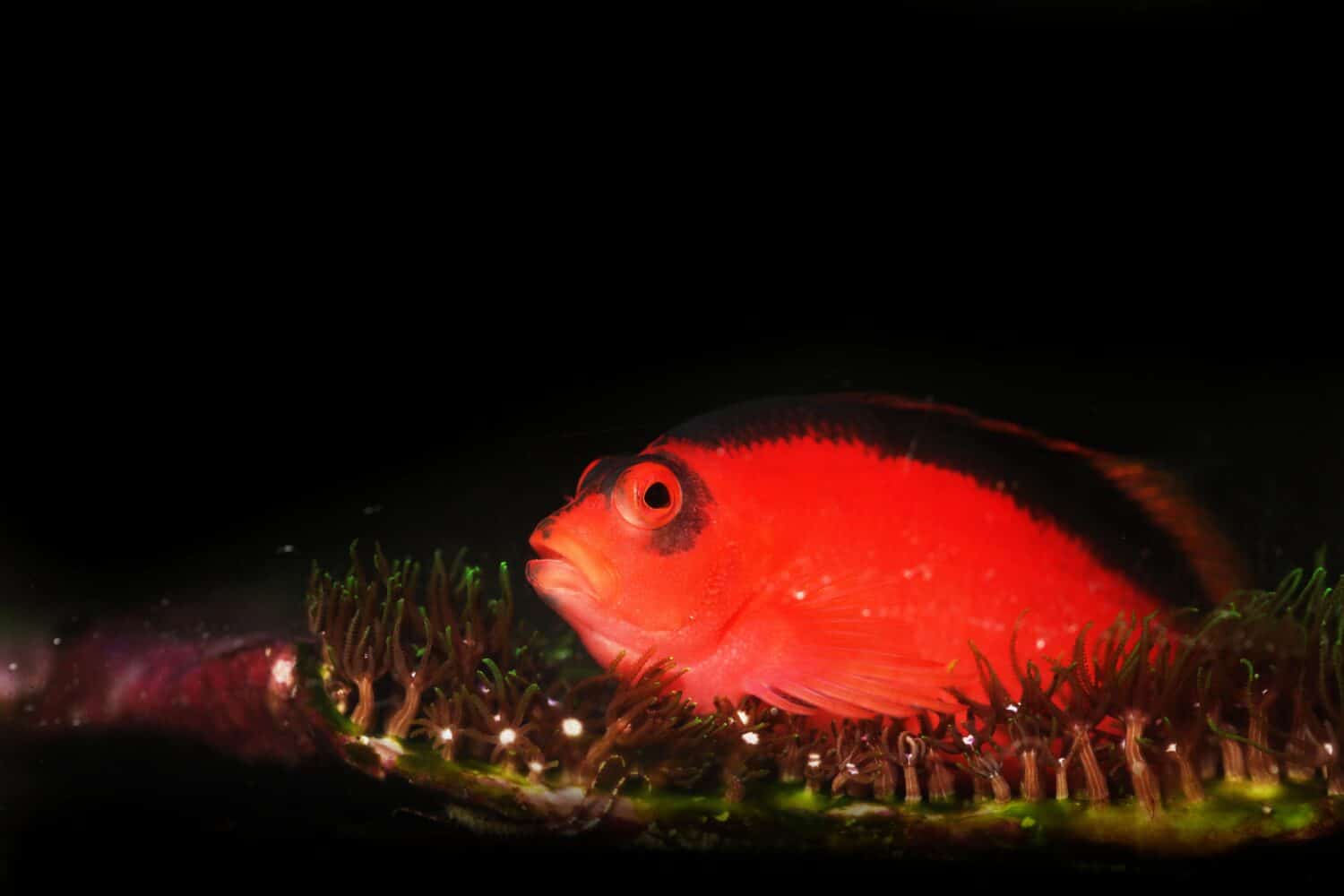
Bright red scales distinguish the flame hawkfish.
©Pavaphon Supanantananont/Shutterstock.com
One of the known traits of the flame hawkfish is its bright red scales. If you’re looking for a fish to add some flare to your tank, then the Flame Hawkfish is perfect. It features a small size and loves to stick to rocks or corals.
However, the main downside which makes it difficult to keep is that it’s a highly aggressive fish. It’s a bottom-dweller that loves to pounce on prey that passes by its territory. So, it’s only recommended for tanks with only one or two bottom-dwellers that won’t cross each other’s path.
The fish also is friendly with others in a tank that will leave them alone. If other fish dwell above it, the Flame fish will often be friendly. If you want to add the Flame Hawkfish to your tank, make sure the tank is a minimum 30-gallon.
8. Volitan Lionfish

A lionfish flaunting its protruding antenna-like fins.
©Nick Hobgood / Creative Commons – Original
A volitan lionfish is extraordinary to look at and often takes the attention off of most other fish in the tank. They look like they have a lion‘s mane, which are small antenna-like fins that are a sight to see. While they make excellent pets, you have to remember that they are quite large and are only good for bigger aquariums.
Unfortunately, the lionfish isn’t friendly and may consume smaller fish and shrimp that it finds. So, they aren’t suitable for aquariums with smaller fish. If you do intend to get one, you can use a glass separation to help prevent it from eating other small aquatic animals.
The other reason why lionfish, specifically the volitan, is difficult to raise is because its fins contain a toxin. While handling the fish, they can sting through nets, bags, and gloves. This sting can be deadly, so they must be handled with care. Their venom can also be fatal to other fish in the tank, so only get them if you can care for them properly.
9. Moorish Idol
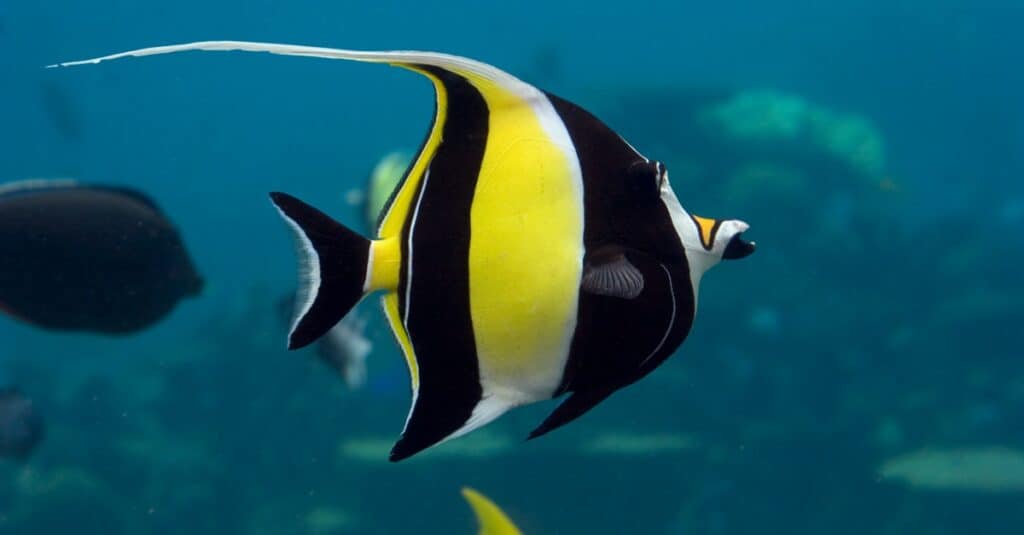
Moorish idols are diurnal, meaning they are active during the day.
©iStock.com/qldian
The Moorish idol is another fish that made its appearance in Finding Nemo. Its species is actually very easy to keep but difficult to feed. They often don’t eat because they require a specialized diet, meaning you won’t be able to feed them food from the pet store. Instead, they thrive off of sponges, nori, and brine shrimp.
They are very social fish and often don’t have any issues. Moorish idols must be kept in low-stress tanks. This means tanks are free from aggressive fish or ones that are overcrowded. The species thrives in tanks that have a large capacity, as they love to swim around. They also don’t do well with territorial fish.
10. Pipefish
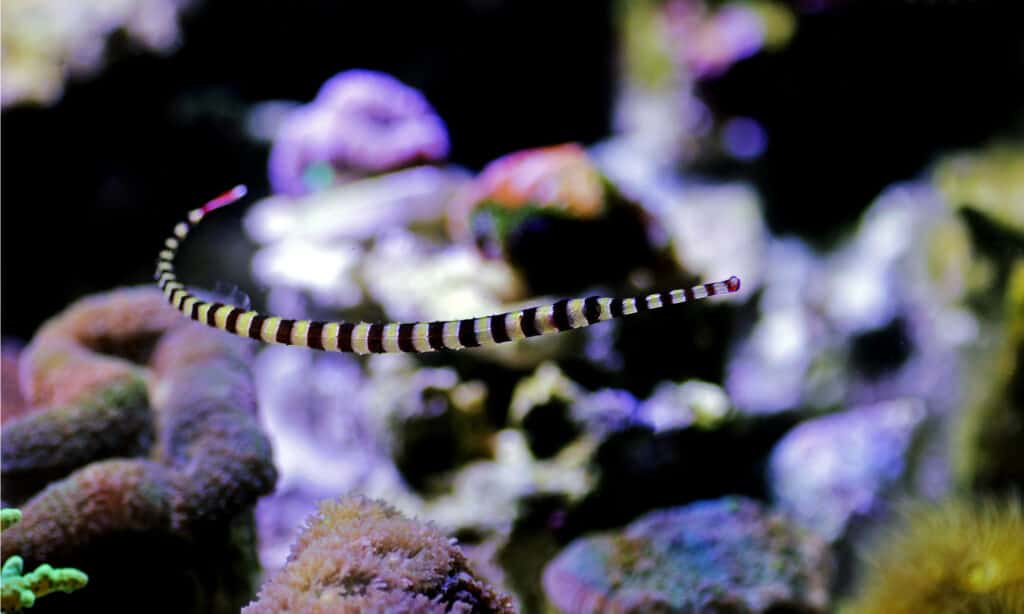
Because they’re so shy, pipefish can be difficult to keep.
©Vojce/Shutterstock.com
Pipefish are one of the most difficult saltwater fish to keep as they are very shy. Their appearance is a spectacle to see, and they almost look like small snakes. However, they are very similar to seahorses.
The pipefish can’t be found at most pet stores and are wild-caught. The species needs places to hide and often prefers non-aggressive fishes. So, keeping them with friendly species that aren’t that territorial is recommended. Aside from that, the pipefish are extremely slow swimmers, which means that they won’t be able to run away from an attacking fish.
The Bottom Line
Now that you’ve discovered 10 types of saltwater fish you can have as pets, we hope one has piqued your interest. If not, don’t worry! There are tons of other saltwater fish you can choose from. Just make sure that you remember to build a tank with each fish’s needs in mind. That way, you can prevent saltwater fish from becoming stressed and territorial.
Summary of 10 Types of Saltwater Fish and Which Make the Best Pets
| Rank | Saltwater Fish | Kind of Pet |
|---|---|---|
| 1 | Clownfish | best beginner fish |
| 2 | Dottyback | need space to roam and hiding places |
| 3 | Firefish | very friendly and fast |
| 4 | Blue-Green Damselfish | friendly and travels in packs but should avoid aggressive fish |
| 5 | Blue Tang | not overly aggressive but many health issues |
| 6 | Diamond Watchman Goby | great for saltwater tank but keep away from its own kind |
| 7 | Flame Hawkfish | territorial bottom feeder who is friendly with some fish |
| 8 | Volitan Lionfish | handle with care and keep separate from small fish |
| 9 | Moorish Idol | easy to keep but special diet |
| 10 | Pipefish | shy and tough to keep |
Thank you for reading! Have some feedback for us? Contact the AZ Animals editorial team.

